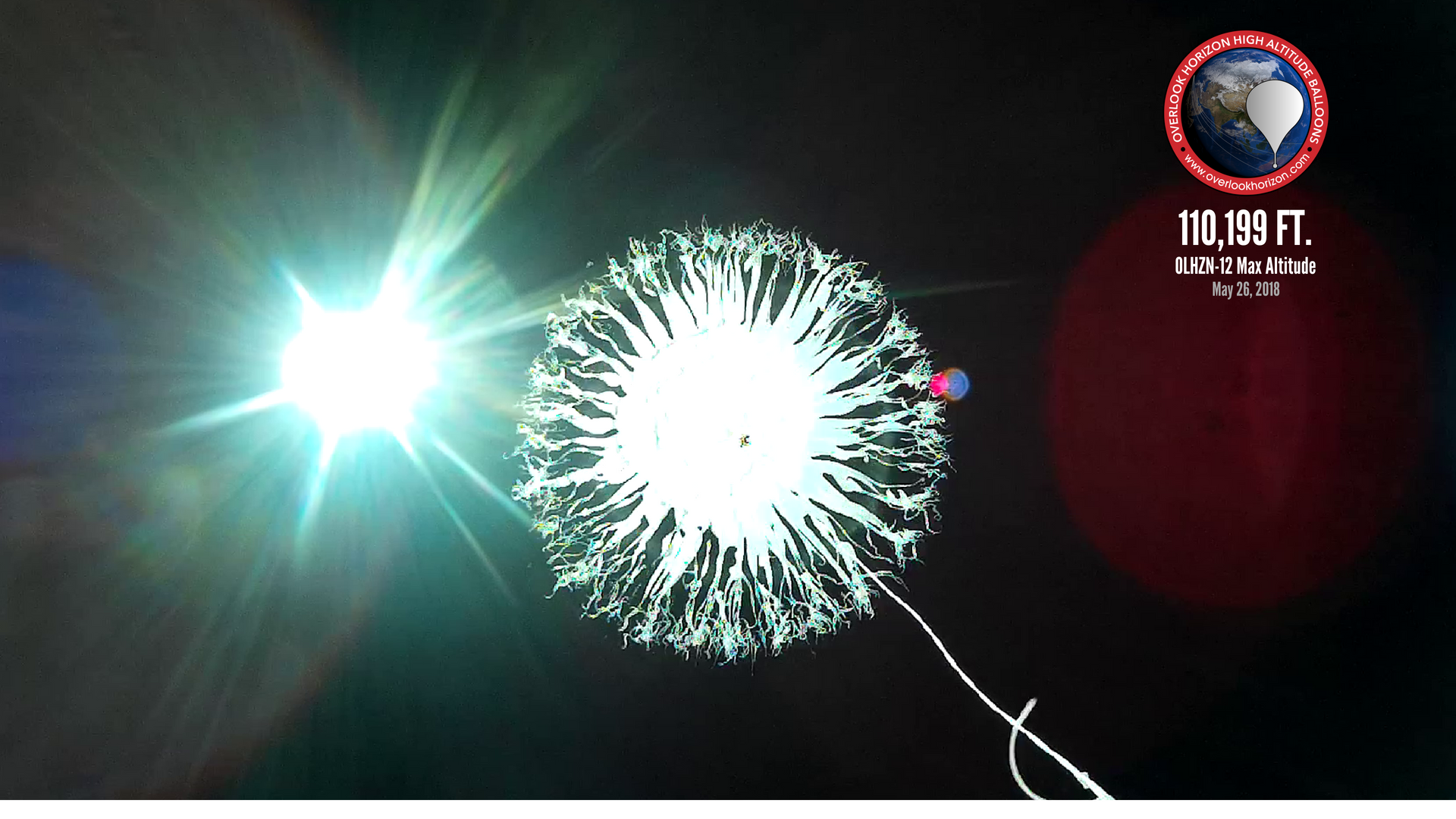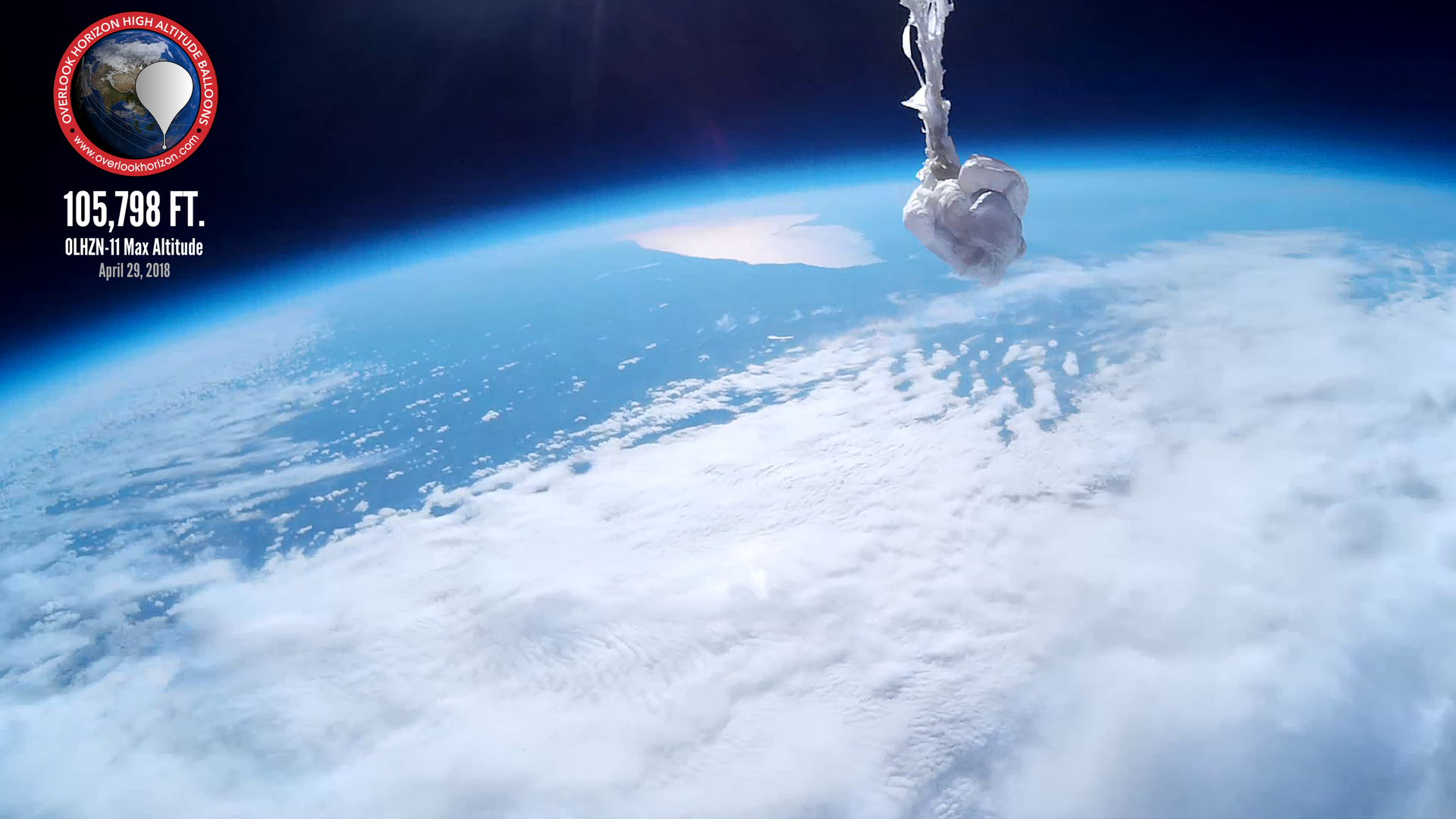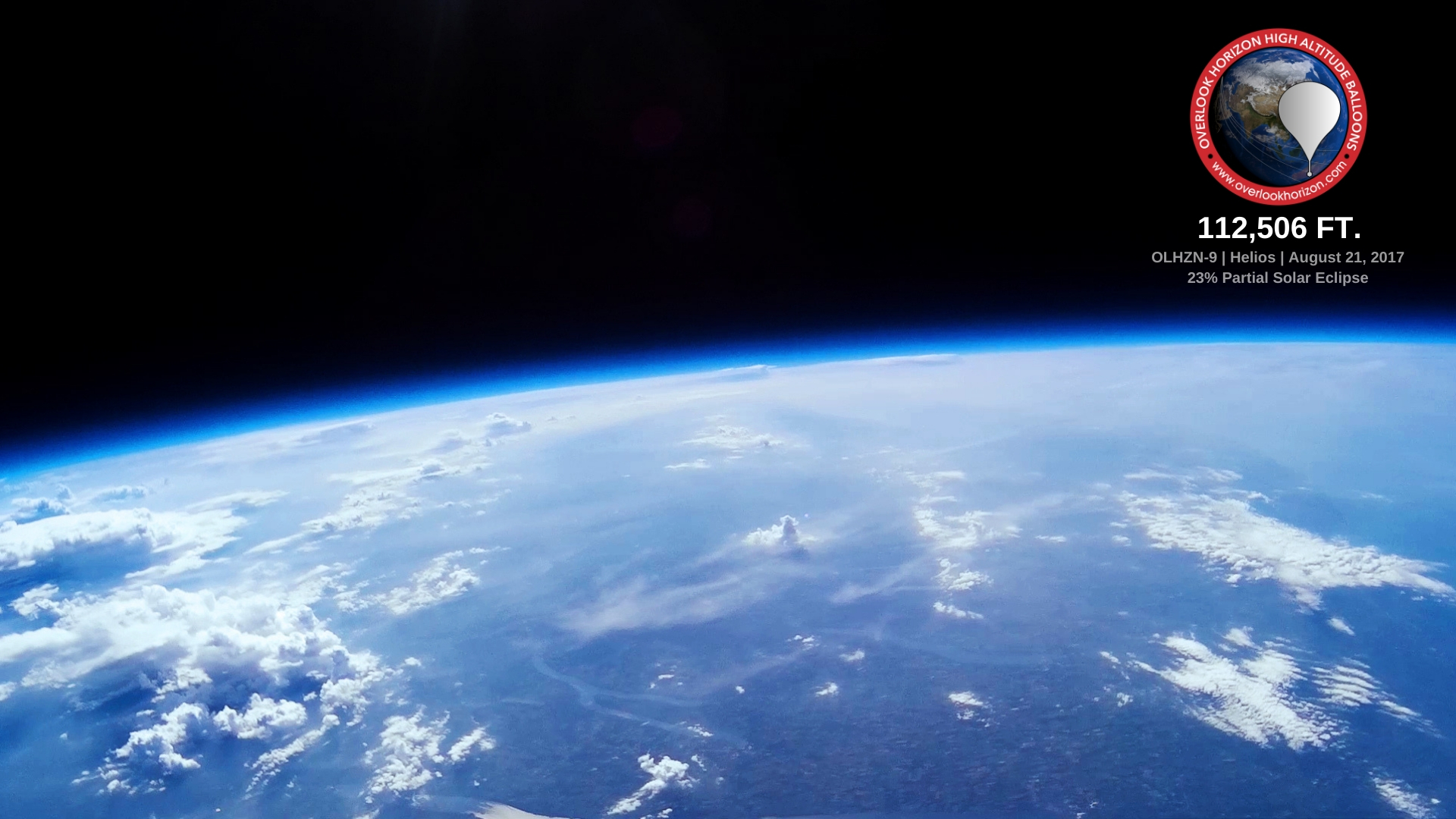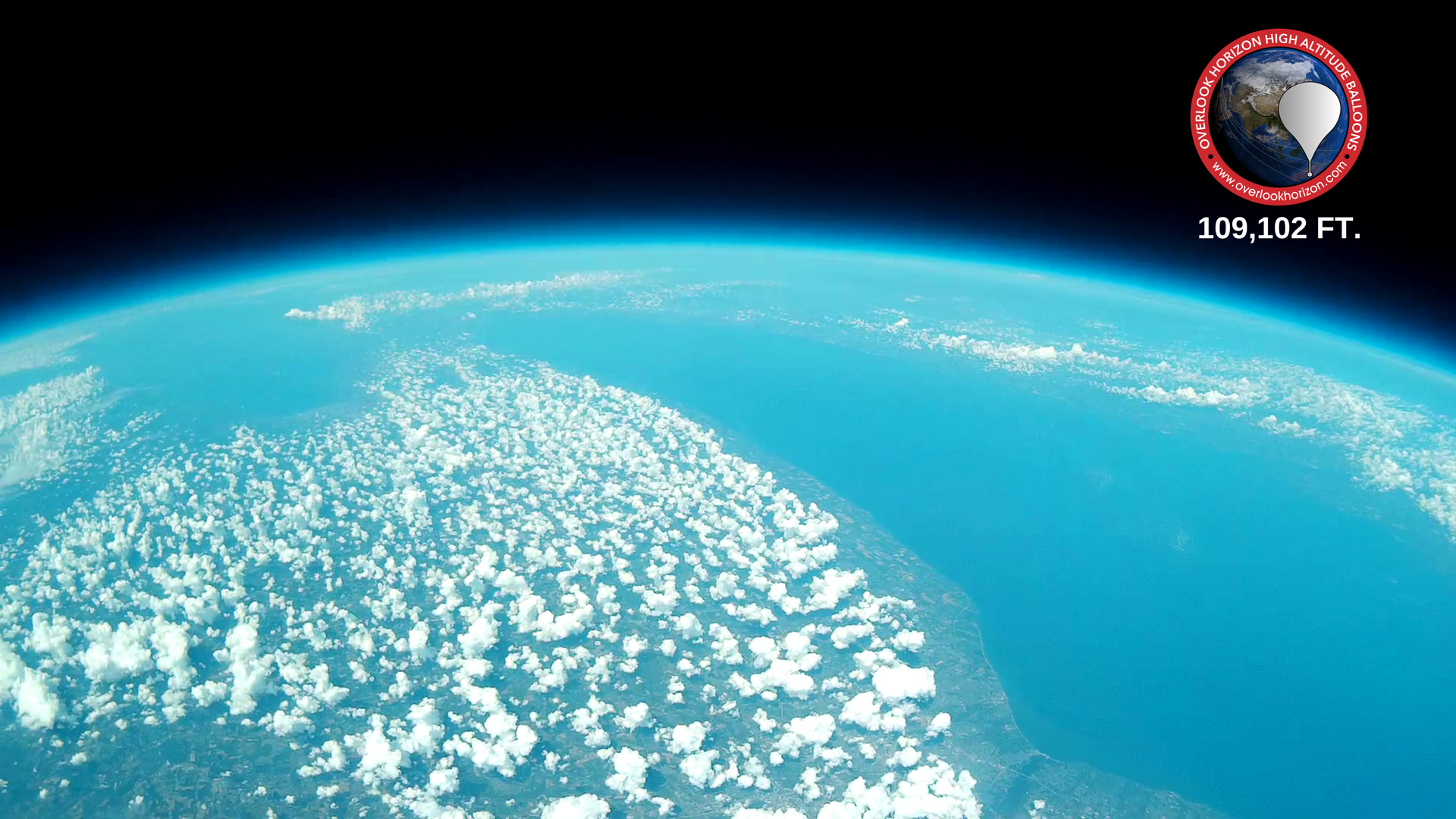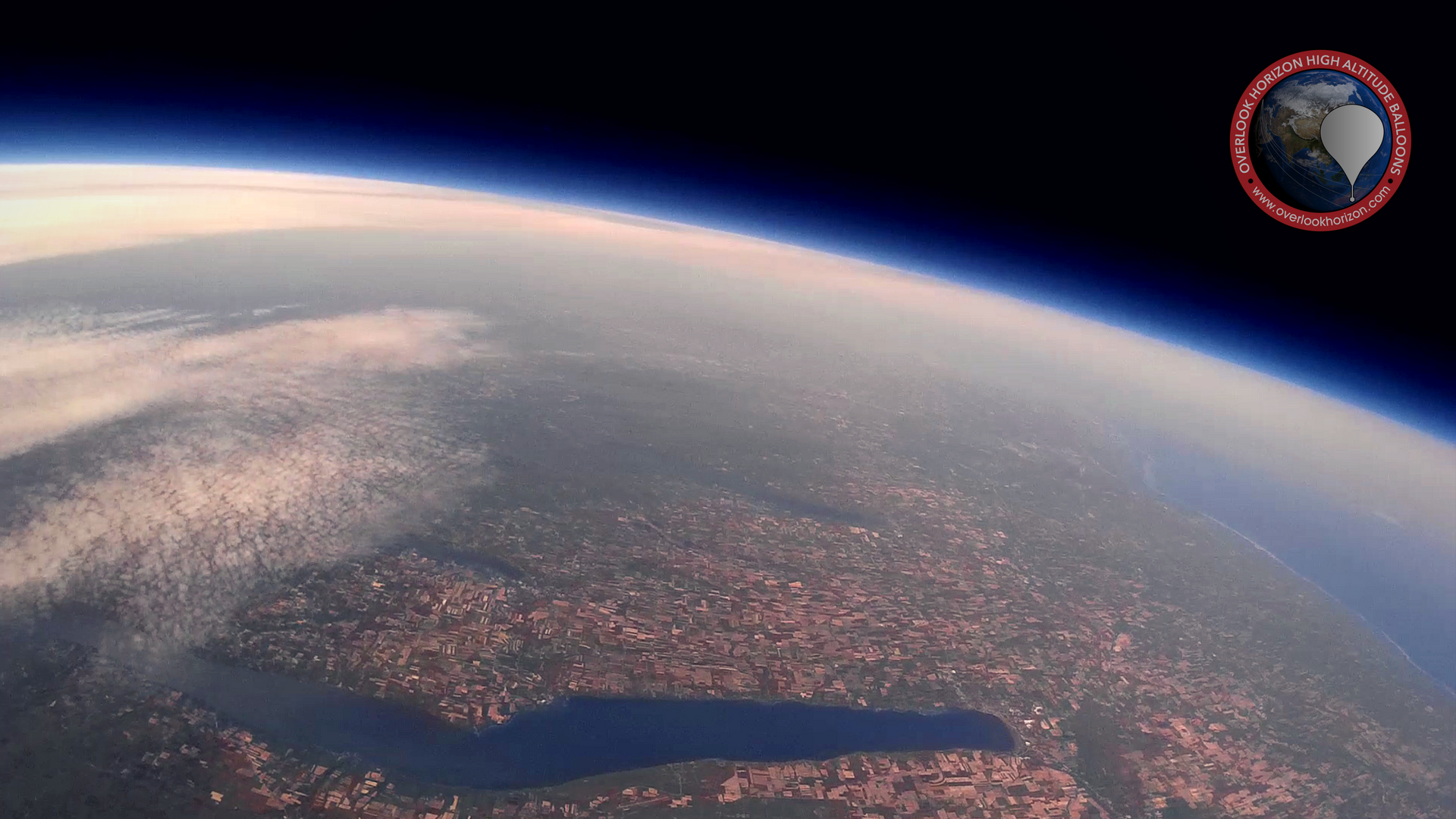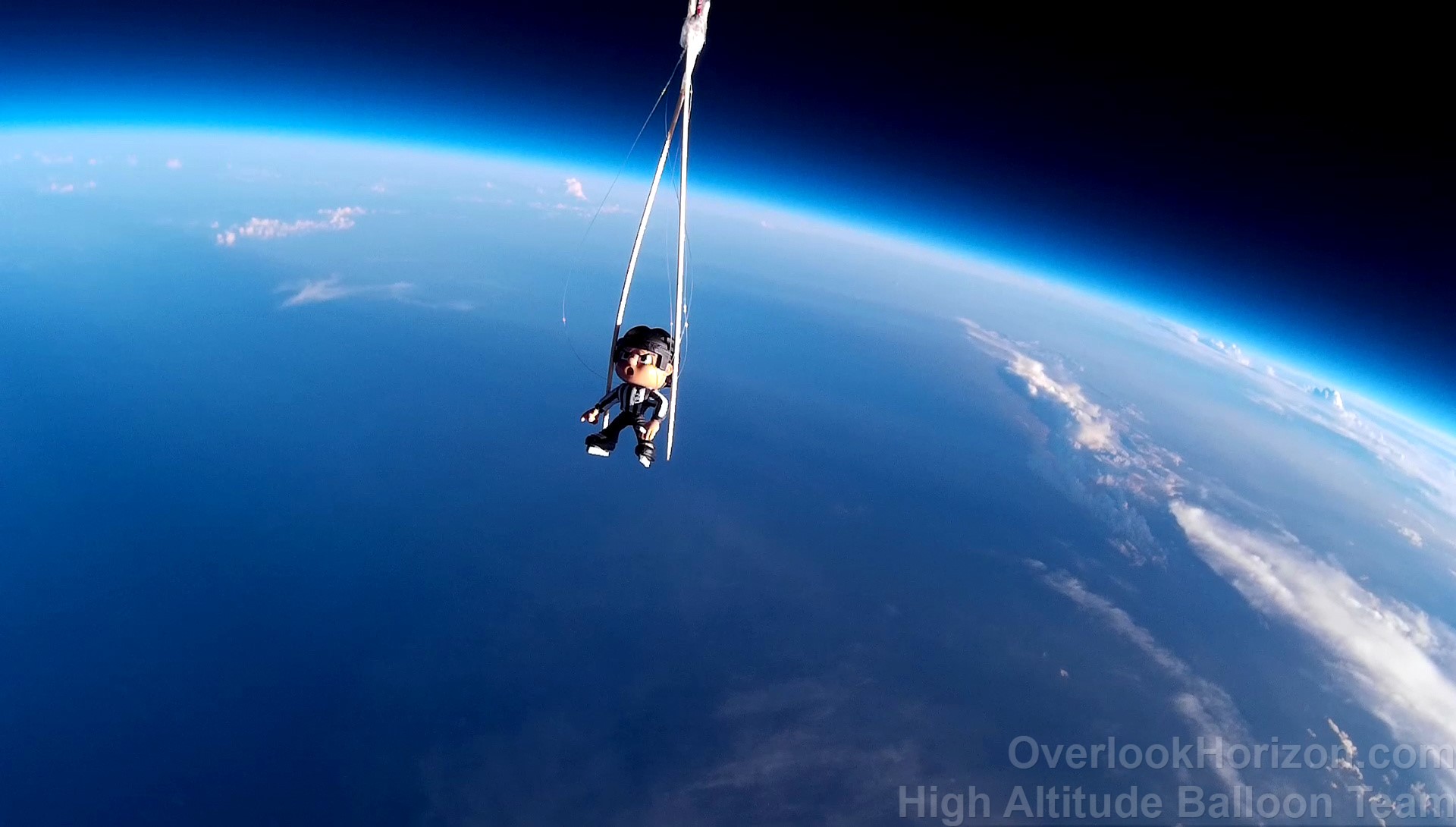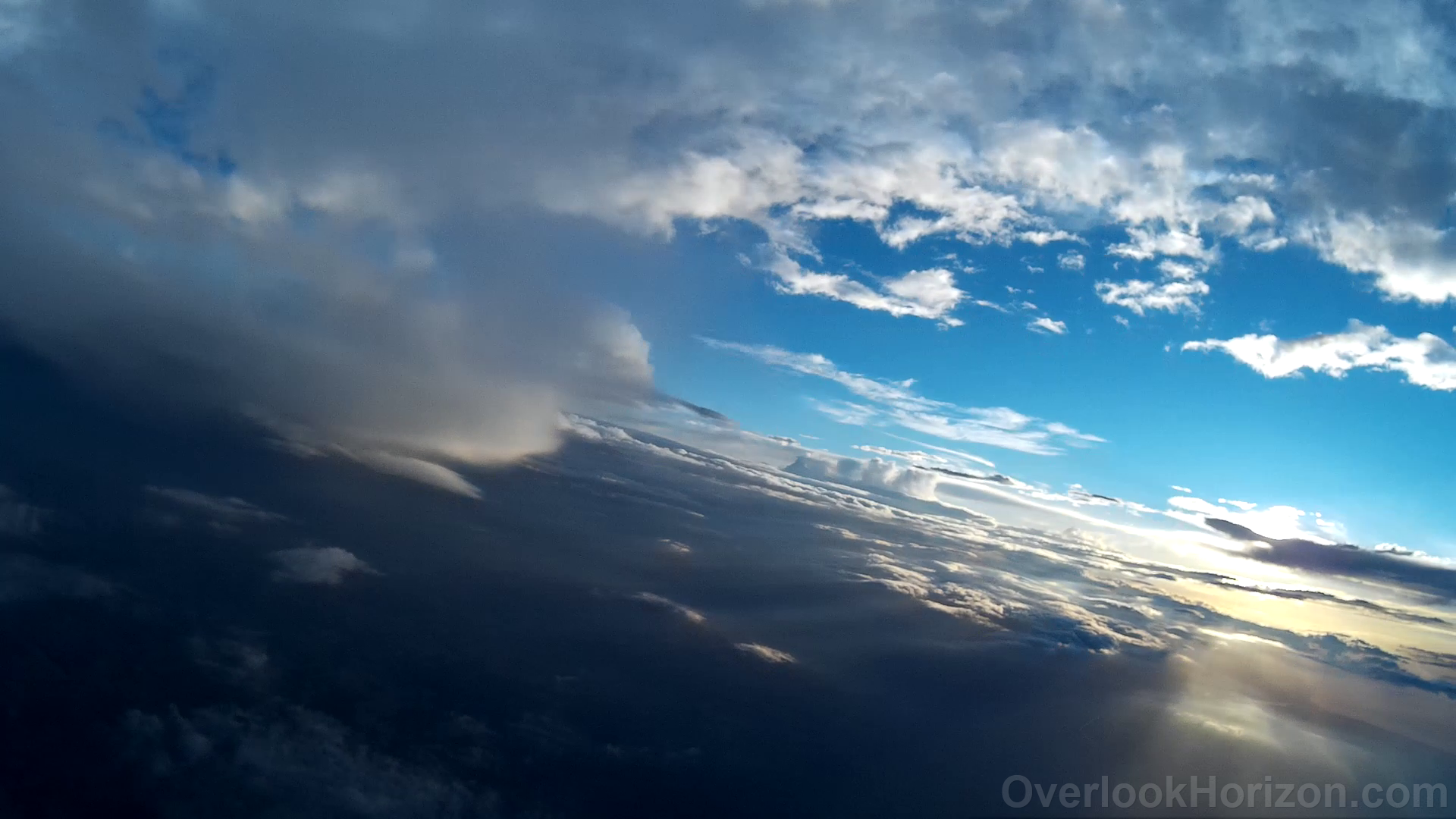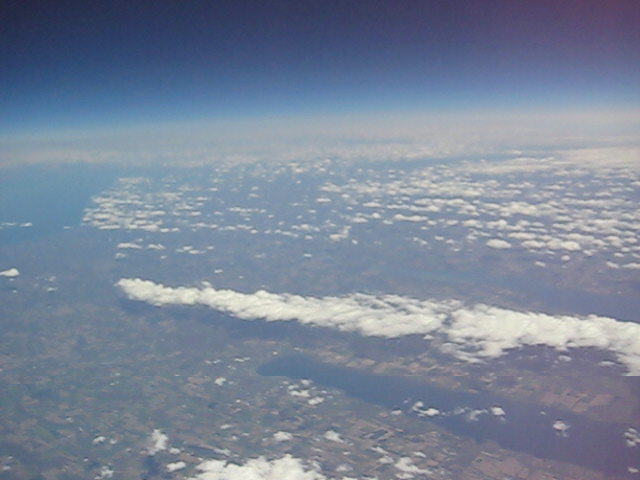OLHZN-12: Using a guitar string as an APRS weather balloon antenna
OLHZN-12 was the twelfth high altitude weather balloon flight for Overlook Horizon High Altitude Balloons. This flight launched on May 26, 2018 at 12:03pm EDT (16:03 UTC) and carried 3 onboard Lightdow LD4000 Cameras along with our new micro-payload that was introduced on OLHZN-10. This flight also debuted our new on-board landing prediction software that had the payload provide predictions of its own landing site ahead of time and relay that information to the ground crew (and anyone following our live flight map) to get our chase team as close as possible to the landing site as the balloon descended.

